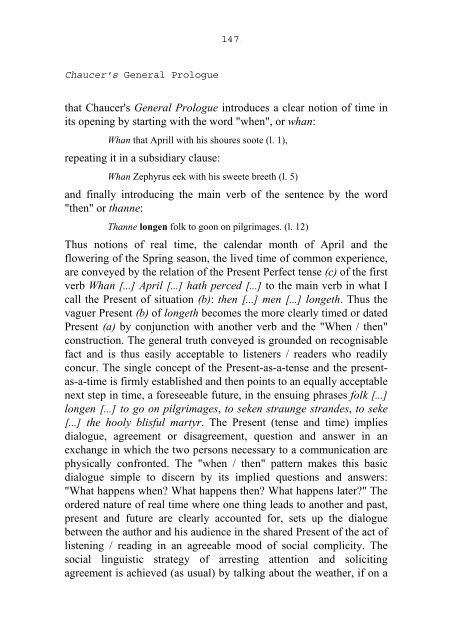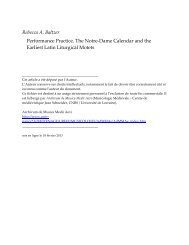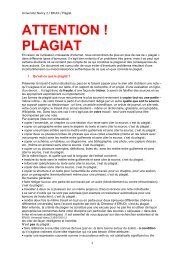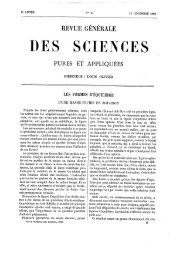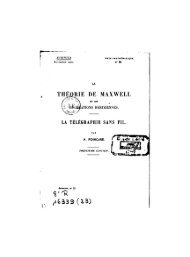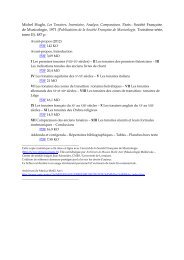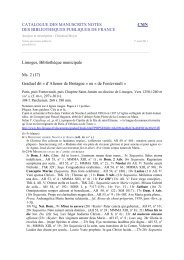Create successful ePaper yourself
Turn your PDF publications into a flip-book with our unique Google optimized e-Paper software.
Chaucer's General Prologue<br />
147_(12U<br />
that Chaucer's General Prologue introduces a clear notion of time in<br />
its opening by starting with the word "when", or whan:<br />
Whan that Aprill with his shoures soote (l. 1),<br />
repeating it in a subsidiary clause:<br />
Whan Zephyrus eek with his sweete breeth (l. 5)<br />
and finally introducing the main verb of the sentence by the word<br />
"then" or thanne:<br />
Thanne longen folk to goon on pilgrimages. (l. 12)<br />
Thus notions of real time, the calendar month of April and the<br />
flowering of the Spring season, the lived time of common experience,<br />
are conveyed by the relation of the Present Perfect tense (c) of the first<br />
verb Whan [...] April [...] hath perced [...] to the main verb in what I<br />
call the Present of situation (b): then [...] men [...] longeth. Thus the<br />
vaguer Present (b) of longeth becomes the more clearly timed or dated<br />
Present (a) by conjunction with another verb and the "When / then"<br />
construction. The general truth conveyed is grounded on recognisable<br />
fact and is thus easily acceptable to listeners / readers who readily<br />
concur. The single concept of the Present-as-a-tense and the presentas-a-time<br />
is firmly established and then points to an equally acceptable<br />
next step in time, a foreseeable future, in the ensuing phrases folk [...]<br />
longen [...] to go on pilgrimages, to seken straunge strandes, to seke<br />
[...] the hooly blisful martyr. The Present (tense and time) implies<br />
dialogue, agreement or disagreement, question and answer in an<br />
exchange in which the two persons necessary to a communication are<br />
physically confronted. The "when / then" pattern makes this basic<br />
dialogue simple to discern by its implied questions and answers:<br />
"What happens when? What happens then? What happens later?" The<br />
ordered nature of real time where one thing leads to another and past,<br />
present and future are clearly accounted for, sets up the dialogue<br />
between the author and his audience in the shared Present of the act of<br />
listening / reading in an agreeable mood of social complicity. The<br />
social linguistic strategy of arresting attention and soliciting<br />
agreement is achieved (as usual) by talking about the weather, if on a


